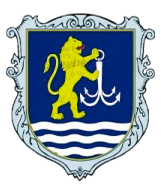SMART CLUSTERS IN THE PORT SYSTEM OF UKRAINE: CONCEPTUAL FOUNDATIONS AND PRACTICAL ORIENTATIONS
Abstract
Introduction. This article explores the prerequisites for the development of Smart Clusters within Ukraine’s port system as a forward-looking vector of technological transformation in maritime infrastructure. The concept of Smart Clustering is based on the convergence of spatial-infrastructural integration with the deployment of advanced digital technologies-such as the Internet of Things (IoT), artificial intelligence, blockchain solutions, and digital twins. This synergy enables a rethinking of port operations through network-based interaction, adaptability, and technological interconnectivity. Purpose. The aim of this research is to substantiate the Concept of Two-Level Smart Clusters as a tool for modernizing Ukraine's port system, capable of ensuring digital integration, environmental sustainability, and scalable interaction with global transport networks, taking into account leading international experience, current technological trends, and the strategic tasks of infrastructure recovery in the post-war period. Results. The paper systematizes theoretical approaches to port clustering, classifies cluster types, and analyzes their impact on port infrastructure efficiency. It highlights the essential role of spatial and infrastructural clustering in enhancing the connectivity of ports with national and international transport corridors. The study introduces the Concept of Two-Level Smart Ports Clusters (TL-SPC) / Two-Level Intelligent Port Clusters (TL-IPC), combining inter-port and intra-port integration to ensure scalability, functional cohesion, and adaptive capacity. Case studies from Europe (North Sea Mega Cluster) and Asia (Greater Bay Area, China) demonstrate the effectiveness of digital synergy within cluster-based port models. The research confirms that two-level clustering acts as a platform for the implementation of intelligent technologies (AI, blockchain, digital twins) and supports the transition toward sustainable, environmentally conscious port operations. The proposed model lays a strategic foundation for transforming Ukrainian ports into high-tech Smart infrastructure nodes capable of continuous digital interaction, efficient resource management, and seamless integration into global transport networks. Conclusions. The findings underscore that clustering is a key instrument in modernizing port systems. The TL-SPC/TL-IPC framework offers structural flexibility, digital integration, and enhanced innovation potential. The transition towards Global Smart Port Clusters (G-SPC) or Global Intelligent Port Clusters (G-IPC) represents the next evolutionary step, emphasizing comprehensive integration into the global transport infrastructure. For Ukraine, this concept offers a system-building foundation for post-war reconstruction and sustainable redevelopment of port infrastructure. It also calls for the development of a National Smart Port Strategy and individualized port development strategies based on specialization and infrastructural capacity.
Downloads
References
2. Кириллова О.В., Кириллова В.Ю. Концепція Smart-кластерів у портах України. Marine Power Plants & Operation, MPP&O-2025 : матеріали V Міжнародної морської науково-практичної конференції кафедри СЕУ і ТЕ, м. Одеса, 04 березня 2025 р. Одеса: ОНМУ, 2025. URL: https://drive.google.com/file/d/1P7siNJ6FHyKq9HLxS8I9mumaVnamzYR8/view.
3. Porter M. E. The Competitive Advantage of Nations. New York : Free Press, 1990.
4. Kyryllova О., Kyryllova, V., Mahamadov, O., & Romakh, V. Smart port: the latest technologies and international experience in their implementation. Transport Development. 2024. № 2(21). С. 62–74. DOI: https://doi.org/10.33082/td.2024.2-21.06.
5. Notteboom, T., & Rodrigue, J.-P. (2005). Port Regionalization: Towards a New Phase in Port Development.
6. De Langen, P. W. Governance in seaport clusters. Maritime Economics & Logistics. 2004. № 6(2). Р. 141–156.
7. Song, D.-W., & Panayides, P. M. Global Supply Chain and Port/Terminal: Integration and Competitiveness. 2008.
8. Jacobs, W., & Hall, P. V. What Conditions Supply Chain Strategies of Ports? The Case of Dubai. 2007.
9. Brett, V., & Roe, M. The Potential for Port Clustering in Ireland. 2010.
10. Notteboom, T., & Winkelmans, W. Reassessing public sector involvement in European seaports. International Journal of Maritime Economics. 20013. № 2. Р. 242–259.
11. Song, D. W. Port co-opetition in concept and practice. Maritime Policy & Management. 2003. № 30(1). Р. 29–44.
12. Van der Lugt, L. M., De Langen, P. W., & Hagdorn, L. Beyond the landlord: worldwide empirical analysis of port authority strategies. International Journal of Shipping and Transport Logistics. 2003. № 5(1). Р. 1–16.
13. Kyryllova O., & Kyryllova V. Теоретичні основи просторової та функціональної еволюції портів. Транспортні системи і технології. 2022. № 40. Р. 170–189. DOI: https://doi.org/10.32703/2617-9040-2022-40-15.
14. Кириллова О.В., Кириллова В.Ю., Магамадов О.Р. Поняття «Smart Port» у контексті глобальних тенденцій інтеграції інтелектуальних транспортних та інформаційних технологій у портовій індустрії. Вчені записки ТНУ імені В.І. Вернадського. Серія «Технічні науки». Том 35(74). № 5. Видавничий дім «Гельветика», 2024. С. 81–87. DOI: https://doi.org/10.32782/2663-5941/2024.5.2/14.





